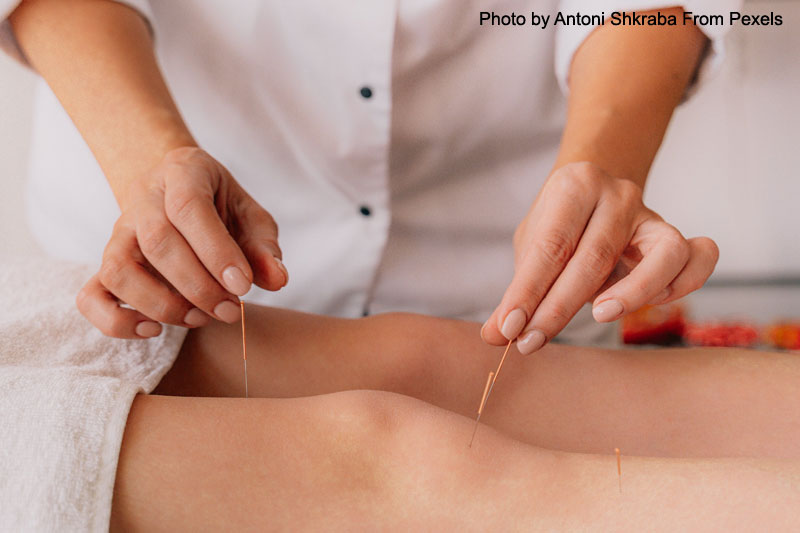
Pain management can be especially challenging to treat. Many individuals experience debilitating chronic pain that can have a profound negative impact on one’s quality of life. The ancient practice of acupuncture has been used for centuries to alleviate pain symptoms.
What is Acupuncture?
Traditional Chinese medicine believes that energy, also called qi or chi, flows through the body, and physical symptoms or ailments occur when it becomes blocked or disproportionate. Meridians are channels that direct the flow of energy through paths within the body, similar to how the circulatory system functions. Acupuncture for pain management relies on the belief that the primary cause of chronic pain is an imbalance between the body and the twelve major meridians of the body.
Even Western medicine recognizes the value of acupuncture as a treatment for many conditions. This belief goes beyond energy balancing and healing, suggesting acupuncture alleviates pain by stimulating nerves, muscles, connective tissue, or fascia. Additionally, it can regulate the immune system, the nervous system response, lymph flow, and increase muscle relaxation. Taken together, these effects can all lead to a significant reduction in pain.
What Are Common Treatment Sites?
Common treatment sites to address chronic pain include the occipital-upper cervical/TMJ complex, the pelvic-hip joint complex, and the foot and ankle.
Imbalances originating in the occipital-upper cervical/TMJ complex can result in craniofacial pain, migraines, dizziness, and neck and shoulder pain. When energy is imbalanced across the body, the many nerves in this area become stimulated, resulting in pain. The temporomandibular joint’s axis of motion is in the upper cervical vertebrae, which is why these two areas are considered a single unit that moves as a complex.
Correcting imbalances in this region of the body is essential in maintaining the balance of the human body since this area is where the brainstem transitions to the spinal cord. All twelve meridians are directly or indirectly connected to the occipital-upper cervical/TMJ complex, which is why treatment with acupuncture can be highly effective in managing pain.
The second area identified includes the pelvic-hip complex, which is a critical point that can cause the imbalance of the spine, resulting in back pain, disc problems, stenosis, and pelvic pain. If any of the vertebrae overcompensates due to energy imbalance, it can result in a curve in the spine that causes pain.
Localized treatments often fail to address pain in this region because the pain originates from imbalances in the pelvic-hip joint complex, which means that pain is a symptom of the imbalance, not the problem. Six of the twelve major meridians of the body are connected to the pelvic-hip joint complex. In addition to treating back pain, acupuncture targeting this region can also resolve pelvic pain and painful bladder, uterine, kidney, hepatobiliary, and pancreatic diseases.
Imbalances affecting the foot and ankle can result in chronic pain in the foot, lower leg, knee, hip, back, and neck. Leaning on one leg can contribute to the body’s and meridians’ imbalances. Treating this area with acupuncture can result in a marked decrease in pain levels.
What Types of Pain Can Acupuncture Benefit?
The reality is that acupuncture can be an effective strategy for holistic pain management. It can alleviate a host of conditions, which may worsen existing physical pain and further erode one’s quality of life. In addition to pain, acupuncture can alleviate symptoms of:
- Anxiety and depression
- Infertility
- Menopause and PMS
- Digestive problems and nausea
- Migraines
- Autoimmune conditions
- Cancer pain and recovery after receiving chemotherapy
- Upper respiratory infections
- Urinary tract infections
- Osteoarthritis
- Headaches and migraines
- Myofascial pain syndrome
- Sciatica
- Prostatitis
- Chronic pelvic pain syndrome
- Incontinence
- Irritable bowel syndrome
- Fibromyalgia
- Allergies
- Asthma
- Carpal tunnel syndrome
In addition to its ability to alleviate physical symptoms related to many conditions, acupuncture represents a safe alternative to Western medicine, which can often come with harsh side effects and the use of addictive medications. Acupuncture has a very low incidence rate for serious adverse events. The likelihood of experiencing a serious adverse event is only about 8 per million treatments, making it far safer than many other treatment options.
This data has contributed to increased interest in acupuncture for pain management in the United States and other Western countries. It is more commonly accepted as a valid treatment for pain management, and it is likely to continue gaining popularity as there are now more than ten million acupuncture treatments administered annually in the United States. This figure is likely to grow as more patients look for suitable alternatives to addictive pain medicines.
To learn more about the benefits of acupuncture for pain management, contact MK Integrative Wellness today!
MK Integrative Wellness offers various natural and herbal medicine options that use naturopathic medicine principles, from consultations, acupuncture, customized herbal formulations, natural pain management, and more. Our team can help you to manage your health and wellness through natural medicine options proactively.
